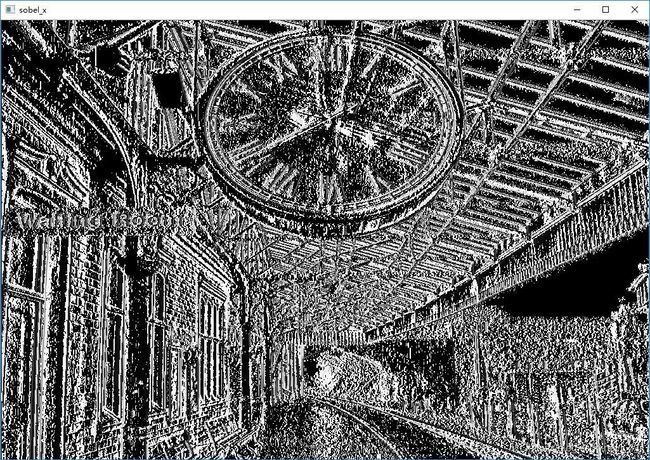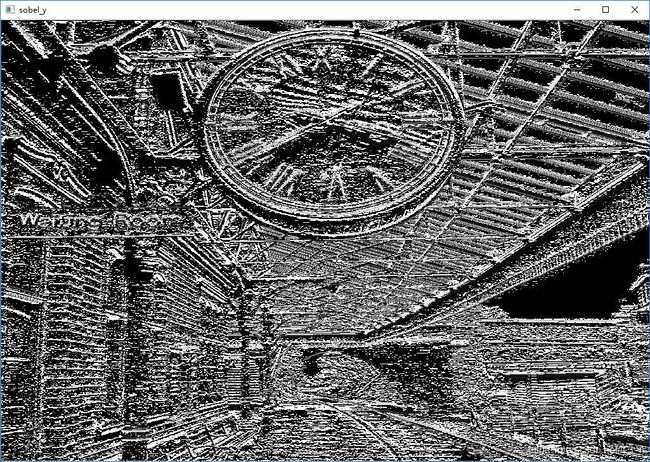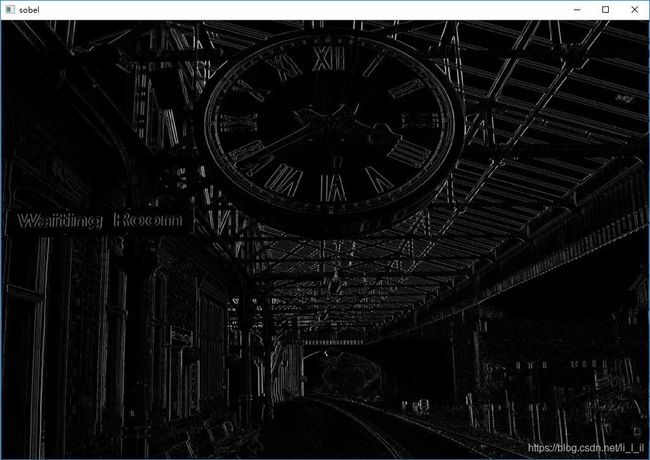python-OpenCV之边缘检测
简述
边缘指像素值急剧变化的位置。对于识别物体而言,边缘起着非常重要的作用。边缘检测的目的是在不损害图像内容的情况下制作一个线图。其方式依然是以卷积为核心操作。
知识点
1.有时需要将原图片分别与若干个卷积核进行卷积,这时需要将各个卷积结果进行最终整合,整合的方式主要有以下四种方式
2.因为像素值的范围为0~255,所以图片数组最后的数据类型应该为unit8
Roberts边缘检测
Roberts算子是边缘检测中最简单的算子,利用差分定义生成。
检测流程
1.分别用45°方向差分的卷积算子和135°方向差分的卷积算子对图像进行卷积
2.将上述两个卷积结果进行整合
3.对最后结果进行整理(规范像素值)
说明:
1.scipy库中的convolve2d函数可进行二维数组的卷积,其语法为 scipy.signal.convolve2d(in1, in2, mode='full', boundary='fill', fillvalue=0)
代码示例
import cv2 as cv
import numpy as np
from scipy import signal
# 定义roberts函数
def roberts(I, _boundary='full', _fillvalue=0):
# 获得原图片的尺寸
H1, W1 = I.shape[0:2]
# 定义算子尺寸
H2, W2 = 2, 2
# 进行45°方向卷积
# 定义45°方向卷积核
R1 = np.array([[1, 0], [0, -1]], np.float32)
# 锚点位置
kr1, kc1 = 0, 0
# 进行卷积
IconR1 = signal.convolve2d(I, R1, mode='full', boundary=_boundary, fillvalue=_fillvalue)
# 截取得到same卷积
IconR1 = IconR1[H2 - kr1 - 1:H1 + H2 - kr1 - 1, W2 - kc1 - 1:W1 + W2 - kc1 - 1]
# 进行135°方向卷积
R2 = np.array([[0, 1], [-1, 0]], np.float32)
kr2, kc2 = 0, 1
IconR2 = signal.convolve2d(I, R2, mode='full', boundary=_boundary, fillvalue=_fillvalue)
IconR2 = IconR2[H2 - kr2 - 1:H1 + H2 - kr2 - 1, W2 - kc2 - 1:W1 + W2 - kc2 - 1]
return (IconR1, IconR2)
if __name__ == "__main__":
# 读取图片
image = cv.imread('test2.jpg', flags=0)
cv.imshow('original_Image', image)
# 进行roberts边缘检测
IconR1, IconR2 = roberts(image, 'symm')
# 取图片数组各值的绝对值
IconR1 = np.abs(IconR1)
# RGB图像的深度应为8位
edge_45 = IconR1.astype(np.uint8)
cv.namedWindow('edge_45', cv.WINDOW_NORMAL)
cv.imshow('edge_45', edge_45)
IconR2 = np.abs(IconR2)
edge_135 = IconR2.astype(np.uint8)
cv.namedWindow('edge_135', cv.WINDOW_NORMAL)
cv.imshow('edge_135', edge_135)
# 将45°方向卷积结果和135°方向卷积结果平方后求和在开方求得
edge = np.sqrt(np.power(IconR1, 2.0) + np.power(IconR2, 2.0))
edge = np.round(edge)
# 因为是两个图片的‘叠加‘,所以存在大于255的风险,将大于255的像素值都取255
edge[edge > 255] = 255
edge = edge.astype(np.uint8)
cv.namedWindow('edge', cv.WINDOW_NORMAL)
cv.imshow('edge', edge)
cv.waitKey()
cv.destroyAllWindows()prewitt边缘检测
prewitt算子可以看出是均值平滑算子和Roberts算子卷积后的结果,因此他兼具平滑和检测功能。
检测流程
1.对图像的竖直/水平方向进行平滑
2.对图像的水平/竖直方向进行差分
3.将水平和竖直方向上的差分结果进行整合
4.对最后结果进行整理(规范像素值)
代码示例
import cv2 as cv
import numpy as np
from scipy import signal
def prewitt(I, _boundary='symm'):
# 先对竖直方向进行平滑
ones_y = np.array([[1], [1], [1]], np.float32)
i_conv_pre_x = signal.convolve2d(I, ones_y, mode='same', boundary=_boundary)
# 再对水平方向进行差分
diff_x = np.array([[1, 0, -1]], np.float32)
i_conv_pre_x = signal.convolve2d(i_conv_pre_x, diff_x, mode='same', boundary=_boundary)
# 对水平方向进行平滑
ones_x = np.array([[1, 1, 1]], np.float32)
i_conv_pre_y = signal.convolve2d(I, ones_x, mode='same', boundary=_boundary)
# 对竖直方向进行差分
diff_y = np.array([[1], [0], [-1]], np.float32)
i_conv_pre_y = signal.convolve2d(i_conv_pre_y, diff_y, mode='same', boundary=_boundary)
return (i_conv_pre_x, i_conv_pre_y)
if __name__ == "__main__":
# 读取图片,注意,要读入灰度图
image = cv.imread('test.jpg', flags=0)
# 显示原图片
cv.namedWindow('dfs', cv.WINDOW_NORMAL)
cv.imshow('dfs', image)
# 调用已写好的函数进行卷积
i_conv_pre_x, i_conv_pre_y = prewitt(image)
# 对图像数组的数值取绝对值
abs_i_conv_pre_x = np.abs(i_conv_pre_x)
abs_i_conv_pre_y = np.abs(i_conv_pre_y)
# 重新复制一份结果,后面合成最终结果时会用到
edge_x = abs_i_conv_pre_x.copy()
edge_y = abs_i_conv_pre_y.copy()
# 将超出255的赋值为255
edge_x[edge_x > 255] = 255
edge_y[edge_y > 255] = 255
# 因为色素的数值范围为0~255,所以应该设置为unit8数据类型
edge_y = edge_y.astype(np.uint8)
edge_x = edge_x.astype(np.uint8)
cv.namedWindow('edge_x', cv.WINDOW_NORMAL)
cv.imshow("edge_x", edge_x)
cv.namedWindow('edge_y', cv.WINDOW_NORMAL)
cv.imshow('edge_y', edge_y)
# 将两个结果合并
# 有多种合并方法,这里用的时插值法
edge = abs_i_conv_pre_x * 0.5 + abs_i_conv_pre_y * 0.5
edge[edge > 255] = 255
edge = edge.astype(np.uint8)
cv.namedWindow('edge', cv.WINDOW_NORMAL)
cv.imshow('edge', edge)
cv.waitKey()
cv.destroyAllWindows()
Sobel边缘检测
Sobel算子跟Prewitt算子类似,也自带平滑效果,只不过它的平滑不是非归一均值平滑而是非归一高斯平滑。
检测流程
1.对图像的竖直/水平方向进行平滑
2.对图像的水平/竖直方向进行差分
3.将水平和竖直方向上的差分结果进行整合
4.对最后结果进行整理(规范像素值)
代码示例
import math
import cv2 as cv
import numpy as np
from scipy import signal
# 理论上sobel算法采用高斯平滑的算子,应该比prewitt对“明显”的边缘更加敏感
# 返回n阶非归一化的高斯平滑算子
def pascalSmooth(n):
# 这里的数组必须为二维,因为后面的convoluted函数要求的输入必须为二维数组
pascalSmooth = np.zeros([1, n], np.float32)
for i in range(n):
# math.factorial(x)函数返回x的阶乘
pascalSmooth[0][i] = math.factorial(n - 1) / (math.factorial(i) * math.factorial(n - 1 - i))
return pascalSmooth
# 由高斯平滑算子得到差分算子,并返回差分算子
def pascalDiff(n):
pascalDiff = np.zeros([1, n], np.float32)
pascalSmooth_previous = pascalSmooth(n - 1)
for i in range(n):
if i == 0:
pascalDiff[0][i] = pascalSmooth_previous[0][i]
elif i == n - 1:
pascalDiff[0][i] = -pascalSmooth_previous[0][i - 1]
else:
pascalDiff[0][i] = pascalSmooth_previous[0][i] - pascalSmooth_previous[0][i - 1]
return pascalDiff
# 得到sobel算子
def getSobelKernel(n):
pascalSmoothKernel = pascalSmooth(n)
pascalDiffKernel = pascalDiff(n)
# np.transpose的功能是将矩阵转置
sobelKernal_x = signal.convolve2d(pascalSmoothKernel.transpose(), pascalDiffKernel, mode='full')
sobelKernal_y = signal.convolve2d(pascalSmoothKernel, pascalDiffKernel.transpose(), mode='full')
return (sobelKernal_x, sobelKernal_y)
# sobel边缘检测核心函数
def sobel(image, n):
# rows, cols = image.shape
pascalSmoothKernel = pascalSmooth(n)
pascalDiffKernel = pascalDiff(n)
image_sobel_x = signal.convolve2d(image, pascalSmoothKernel.transpose(), mode='same')
image_sobel_x = signal.convolve2d(image_sobel_x, pascalDiffKernel, mode='same')
image_sobel_y = signal.convolve2d(image, pascalSmoothKernel, mode='same')
image_sobel_y = signal.convolve2d(image_sobel_y, pascalDiffKernel.transpose(), mode='same')
return (image_sobel_x, image_sobel_y)
if __name__ == "__main__":
image = cv.imread('test4.jpg', flags=0)
cv.namedWindow('original', cv.WINDOW_NORMAL)
cv.imshow('original', image)
# 进行sobel卷积
sobel_x, sobel_y = sobel(image, 7)
# 归一化处理
image_sobel_x = sobel_x / np.max(sobel_x)
image_sobel_y = sobel_y / np.max(sobel_y)
image_sobel_x = np.power(image_sobel_x, 1)
image_sobel_y = np.power(image_sobel_y, 1)
# 数值化
image_sobel_x = image_sobel_x * 255
image_sobel_y = image_sobel_y * 255
image_sobel_x = image_sobel_x.astype(np.uint8)
image_sobel_y = image_sobel_y.astype(np.uint8)
# 显示不同方向的sobel卷积结果
cv.namedWindow('sobel_x', cv.WINDOW_NORMAL)
cv.namedWindow('sobel_y', cv.WINDOW_NORMAL)
cv.imshow('sobel_x', image_sobel_x)
cv.imshow('sobel_y', image_sobel_y)
# 对两个方向的处理结果进行整合
edge = np.sqrt(np.power(sobel_x, 2.0), np.power(sobel_y, 2.0))
edge = edge / np.max(edge)
edge *= 255
edge = edge.astype(np.uint8)
cv.namedWindow('sobel', cv.WINDOW_NORMAL)
cv.imshow('sobel', edge)
cv.waitKey()
cv.destroyAllWindows()OpenCV API
函数语法:Sobel( src, ddepth, dx, dy, ksize, scale, borderType )
| 参数 |
解释 |
| src |
输入矩阵 |
| ddepth |
输出矩阵的数据类型 |
| dx |
当dx ≠ 0时,src与差分方向为水平方向上的Sobel核卷积 |
| dy |
当dx = 0,dy ≠ 0时,src与差分方向为垂直方向上的Sobel核卷积 |
| ksize |
Sobel核的尺寸,值为1,3,5,7 |
| Scale(可选) |
比例系数 |
| Delta(可选) |
平移系数 |
| borderType(可选) |
边界扩充类型 |
Canny边缘检测
基于卷积运算的边缘检测算法,如Sobel和Prewitt等有以下两个缺点:
1.没有充分利用边缘的梯度
2.最后输出的边缘二值图只是简单地利用阈值进行处理,容易损失信息。
Canny算法基于这两点做了改进,提出了:
1.基于边缘梯度方向的非极大值抑制
2.双阈值的滞后阈值处理
检测流程
1.高斯平滑去噪
2.计算梯度方向
3.非极大值抑制
4.双阈值的滞后阈值处理
示例代码
import math
import Sobel
import cv2 as cv
import numpy as np
# 非极大值抑制函数,返回“极大值”矩阵
def non_maximum_suppression_default(dx, dy):
# dx和dy为经过水平差分算子和垂直差分算子卷积后的数值矩阵(sobel或者prewitt)
edgeMag = np.sqrt(np.power(dx, 2.0), np.power(dy, 2.0))
rows, cols = edgeMag.shape
# 梯度矩阵(边缘强度)
# gradientDirection = np.zeros(edgeMag.shape)
# 非极大值抑制后的矩阵
edgeMag_nonMaxSup = np.zeros(edgeMag.shape)
for r in range(1, rows - 1):
for c in range(1, cols - 1):
angle = math.atan2(dy[r][c], dx[r][c]) / math.pi * 180
# gradientDirection[r][c] = angle
# 判断差值方向
# 左右方向
if (abs(angle) < 22.5 or abs(angle) > 157.5):
if (edgeMag[r][c] > edgeMag[r][c - 1] and edgeMag[r][c] > edgeMag[r][c + 1]):
edgeMag_nonMaxSup[r][c] = edgeMag[r][c]
# 左上/右下方向
if (angle >= 22.5 and angle < 67.5 or (-angle > 112.5 and -angle <= 157.5)):
if (edgeMag[r][c] > edgeMag[r - 1][c - 1] and edgeMag[r][c] > edgeMag[r + 1][c + 1]):
edgeMag_nonMaxSup[r][c] = edgeMag[r][c]
# 上下方向
if (abs(angle) >= 67.5 and abs(angle) <= 112.5):
if (edgeMag[r][c] > edgeMag[r - 1][c] and edgeMag[r][c] > edgeMag[r + 1][c]):
edgeMag_nonMaxSup[r][c] = edgeMag[r][c]
# 右上/左下方向
if ((angle > 112.5 and angle <= 157.5) or (-angle >= 22.5 and -angle < 67.5)):
if (edgeMag[r][c] > edgeMag[r - 1][c + 1] and edgeMag[r][c] > edgeMag[r + 1][c - 1]):
edgeMag_nonMaxSup[r][c] = edgeMag[r][c]
return edgeMag_nonMaxSup
# 判断一个点的坐标是否在图像内
def checkInRange(r, c, rows, cols):
if r >= 0 and r < rows and c >= 0 and c < cols:
return True
else:
return False
# 在已有高于阈值点的情况下确定边缘点
def trace(edgeMag_nonMaxSup, edge, lowerThresh, r, c, rows, cols):
if edge[r][c] == 0:
# 将符合“边缘”要求的像素值都设置为255
edge[r][c] = 255
for i in range(-1, 2):
for j in range(-1, 2):
# 大于低阈值便视为边缘
if checkInRange(r + i, c + j, rows, cols) and edgeMag_nonMaxSup[r + i][c + j] >= lowerThresh:
# 这里用递归遍历周围的像素点
trace(edgeMag_nonMaxSup, edge, lowerThresh, r + i, c + j, rows, cols)
# 滞后阈值处理
def hyteresisThreshold(edge_nonMaxSup, lowerThresh, upperThresh):
rows, cols = edge_nonMaxSup.shape
# 新创建一个用于存储边缘的数组
edge = np.zeros(edge_nonMaxSup.shape, np.uint8)
for r in range(1, rows - 1):
for c in range(1, cols - 1):
# 如果大于高阈值,就确定与其相连的边缘点
if edge_nonMaxSup[r][c] >= upperThresh:
trace(edge_nonMaxSup, edge, lowerThresh, r, c, rows, cols)
# 如果低于低阈值,就直接舍弃
if edge_nonMaxSup[r][c] < lowerThresh:
edge[r][c] = 0
return edge
if __name__ == "__main__":
image = cv.imread('test2.jpg', flags=0)
cv.imshow('original', image)
image_sobel_x, image_sobel_y = Sobel.sobel(image, 3)
edge = np.sqrt(np.power(image_sobel_x, 2.0), np.power(image_sobel_y, 2.0))
edge[edge > 255] = 255
edge = edge.astype(np.uint8)
cv.namedWindow('sobel', cv.WINDOW_NORMAL)
cv.imshow('sobel', edge)
# 抑制非极大值
edgeMag_nonMaxSup = non_maximum_suppression_default(image_sobel_x, image_sobel_y)
edgeMag_nonMaxSup[edgeMag_nonMaxSup > 255] = 255
edgeMag_nonMaxSup = edgeMag_nonMaxSup.astype(np.uint8)
cv.namedWindow('edgeMag_nonMaxSup', cv.WINDOW_NORMAL)
cv.imshow('edgeMag_nonMaxSup', edgeMag_nonMaxSup)
lowerThresh = 40
upperThresh = 150
edge = hyteresisThreshold(edgeMag_nonMaxSup, lowerThresh, upperThresh)
cv.namedWindow('canny', cv.WINDOW_NORMAL)
cv.imshow('canny', edge)
cv.waitKey()
cv.destroyAllWindows()
OpenCV API
函数语法:Canny(image, edges, threshold1, threshole2, apertureSize, L2gradient )
| 参数 |
解释 |
| image |
输入图像 |
| threshold1 |
低阈值 |
| threshold2 |
高阈值 |
| Edges(可选) |
输出边缘强度图像 |
| apertureSize(可选) |
Sobel核的窗口大小,默认3×3 |
| L2gradient(可选) |
计算总的边缘强度时使用的方式,值为true时代表使用的是平方和开方的方式,值为false代表使用的是绝对值和的方式。 |
Laplacian边缘检测
import cv2 as cv
import numpy as np
from scipy import signal
# 核心步骤,拉普拉斯卷积核与图像矩阵进行卷积
def laplacian(image, _boundary='full', _fillvalue=0):
laplacianKernel = np.array([[0, -1, 0], [-1, 4, -1], [0, -1, 0]], np.float32)
i_conv_lap = signal.convolve2d(image, laplacianKernel, mode='same', boundary=_boundary, fillvalue=_fillvalue)
return i_conv_lap
if __name__ == "__main__":
image = cv.imread('test5.jpg', flags=0)
cv.imshow('original', image)
image = np.array(image)
# 对图像进行高斯平滑
image = cv.GaussianBlur(image, (3, 3), 0)
# 调用拉普拉斯核卷积函数
threshEdge = laplacian(image, 'symm')
# 进行阈值处理
threshEdge[threshEdge > 0] = 255
threshEdge[threshEdge < 0] = 0
threshEdge = threshEdge.astype(np.uint8)
cv.imshow('threshEdge', threshEdge)
cv.waitKey()
cv.destroyAllWindows()
OpenCV API
函数语法:placian(src, dst, ddepth, ksize, scale, delta, borderType )
| 参数 |
解释 |
| src |
输入矩阵 |
| dst |
输出矩阵 |
| ddepth |
输出矩阵的数据类型(位深) |
| Ksize(可选) |
Laplacian核的类型 |
| Scale(可选) |
比例系数 |
| delta(可选) |
平移系数 |
| borderType(可选) |
边界扩充类型 |

















